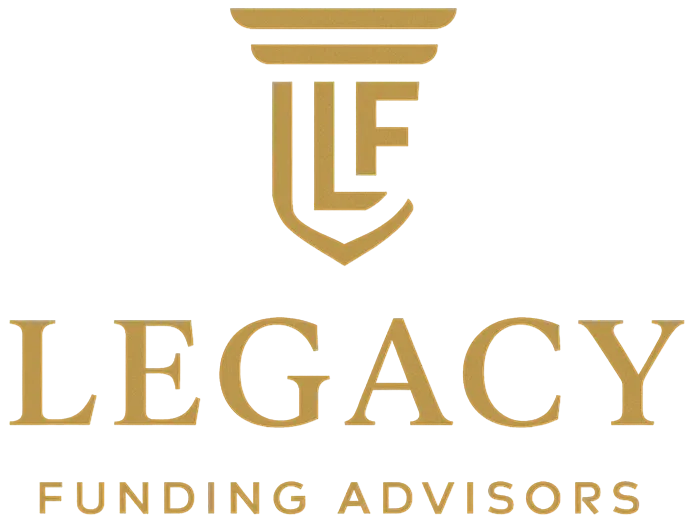
5 Reasons Unsecured Business Loans are Ideal for Small Business Owners
When you run a small business, timing and flexibility can make or break your next move. That’s where unsecured business loans step in. They offer financing without the need to pledge collateral like equipment, inventory, or real estate. This means you can access capital based on your business’s financial strength and revenue, not the assets you own.
What Is an Unsecured Business Loan?
An unsecured business loan is a type of financing that does not require collateral. Approvals are usually based on factors like annual revenue, time in business, and cash flow. Because there’s no physical asset to back the loan, many lenders rely heavily on business performance and creditworthiness (though some programs are more flexible with credit).
For business owners who don’t want to risk personal or business assets, or who don’t have property to offer, unsecured funding is often the most practical and accessible path forward.
How It Differs from Secured Loans
Collateral: Secured loans require business or personal assets as a pledge. Unsecured loans do not.
Approval Time: Unsecured loans can often be approved faster, sometimes within the same day.
Risk: With no assets tied to the loan, the lender carries more risk, which can mean higher costs or shorter terms.
Common Types of Unsecured Business Loans
Short-Term Loans: Fixed loan amounts with predictable daily or weekly repayments, ideal for fast cash needs or short-term projects.
Business Lines of Credit: Flexible access to capital when you need it. You only pay on what you use, useful for managing cash flow.
Merchant Cash Advances (MCAs): Advance funds based on your business’s credit card or bank deposit volume. Payments are often a percentage of daily sales.
Invoice Factoring: Sell your unpaid invoices at a discount to get cash upfront, with no debt added to your balance sheet.
Loan Sizes and Terms That Fit Small Business Needs
Loan Amounts: Typically range from [insert low amount] to [insert high amount], with higher limits available for strong revenue businesses.
Term Length: Standard terms can range from a few months up to [insert period], depending on the product.
Payment Structure: Many unsecured options offer daily, weekly, or monthly payments that fit the business’s cash cycle.
Unsecured loans give small businesses a chance to grow without giving up control or risking their assets. They're often the first funding step for newer businesses, and a flexible cash solution for established ones ready to scale fast.
Who Should Consider an Unsecured Business Loan
Unsecured business loans can support a wide range of business types, but they’re especially well-suited to three common profiles: established small business owners needing quick capital, newer startups with limited credit history, and minority or bilingual business owners facing access challenges with traditional banks.
1. Established Small Business Owners Needing Fast Working Capital
If your business has been operating for several years and generates steady revenue, unsecured financing can be a convenient way to access fast cash without tying up your assets.
Common Uses: Payroll, inventory restocks, equipment repairs, or seizing time-sensitive growth opportunities
Pain Points: Limited time to wait on bank approvals, inconsistent cash flow, or hitting a ceiling with bank lines
Why It Fits: Many unsecured programs are revenue-based, meaning approval is tied to how your business performs now (not your credit score or collateral availability)
When speed matters and collateral isn't an option, unsecured loans offer the support to keep operations moving or fuel expansion.
2. Startups and Young Businesses with Limited Credit History
New businesses often have strong sales potential but lack the credit history or documentation required for traditional lending. That doesn't mean funding is out of reach.
Common Uses: Launching marketing efforts, hiring staff, or purchasing equipment
Pain Points: Being turned down by banks for not having 2+ years in business or missing formal credit lines
Why It Fits: Unsecured options like merchant cash advances or short-term loans can be structured around your monthly revenue, not your credit age
With the right program, even startups generating $20K or more in monthly revenue can get approved without jumping through traditional hurdles.
3. Minority and Bilingual (Spanish-Speaking) Business Owners
Hispanic and minority-owned businesses often face unique barriers when it comes to financing, particularly when language or cultural gaps affect how lenders engage with them.
Common Uses: Cash flow for contracts, equipment upgrades, or launching new locations
Pain Points: Limited access to bilingual support, lack of trust in traditional banks, or feeling overlooked based on business type or community
Why It Fits: Unsecured loans through a relationship-focused marketplace offer fast answers, personalized guidance, and bilingual advisory options
Getting financing shouldn't depend on who you know or how much paperwork you can navigate. Accessible short-term funding with personalized bilingual support can make the difference.
Whether you’ve been in business for six months or six years, what matters most is working with the right lending partner who understands your journey—and offers programs that truly fit.
Eligibility Criteria and How to Qualify
Qualifying for an unsecured business loan doesn’t require perfect credit or years of financials. What it does take is understanding what lenders look for—and how to leverage your strengths. Whether you're running an established company or building momentum in year one, here's what you need to know to increase your chances of approval.
Basic Requirements Most Lenders Will Check
Time in Business: Many programs start at just 6 months in business. Some require 12+ months, especially for larger amounts.
Revenue Thresholds: Monthly deposits of $20K or higher can qualify you for revenue-based capital. The stronger the cash flow, the more options you’ll see.
Credit Score: While good credit helps, it’s not mandatory. Many unsecured lenders will evaluate your revenue trends and average daily balances over FICO scores.
Business Bank Account: Active business banking is a must. Lenders often ask for 3–6 months of bank statements to verify consistency.
What If You Have Bad or Limited Credit?
Lenders understand that many small business owners don’t come from perfect financial backgrounds.
Revenue-Based Financing: Approval is tied to your income, not your credit file.
No Minimum Score Programs: Some lenders serve entrepreneurs with low credit by placing more weight on bank activity and cash deposits.
Co-signers or Guarantors (optional): Not required, but can help in specific cases if you're applying for larger amounts.
Your business revenue tells a stronger story than your credit score ever could.
No Documentation and No Personal Guarantee Options
No Doc Loans: These rely on recent bank statements rather than full tax returns or detailed financials. Fast and simple, with approvals often within hours.
No PG Loans: Limited personal liability loans may be available for high-performing businesses. These are typically for companies with strong monthly deposits and at least 1 year in business.
If you're not ready or willing to offer a personal guarantee, let your advisor know upfront. It narrows the pool, but clear communication matters.
Tips to Improve Your Approval Odds
Keep your business bank account active and separate from personal finances.
Maintain consistent monthly revenue, even if it fluctuates.
Reduce NSFs (non-sufficient funds) or overdrafts during the 90-day period before you apply.
Work with a funding advisor who can match you with lenders based on your actual qualifications.
The right loan is the one that fits your current stage, not some ideal scenario on paper.
Even if you’ve been turned down before, that doesn’t mean you’re out of options. Every day, small businesses get funded based on revenue alone. You just need the right partner and a clear path forward.
Loan Rates, Terms, and Fees Explained
Unsecured business loans are fast, flexible, and more accessible than traditional financing, but that accessibility usually comes with higher costs. Understanding how rates, repayment structures, and fees are calculated helps you make smart decisions that support—not stretch—your cash flow.
Interest Rates and What Affects Them
Unsecured loan rates often range wider than traditional bank financing because approvals are based on performance, not collateral. Here's what lenders typically look at when setting your rate:
Monthly Revenue: Strong and consistent deposits can qualify you for better offers.
Length of Time in Business: More time in business often means lower perceived risk.
Credit Score: Some loans weigh credit lightly or not at all, while others factor it in with revenue patterns.
Loan Type: Lines of credit may have lower rates with usage-based costs. Short-term loans or merchant cash advances generally carry higher fees due to speed and flexibility.
Fast access usually comes with trade-offs. Lower documentation requirements and same-day approvals often mean higher overall costs compared to traditional loans.
Typical Loan Terms and Repayment Structures
The structure of your repayment affects your daily cash flow. Choose based on what realistically works for your business—not what looks impressively large on paper.
Short-Term Loan: Fixed repayments over 3 to 18 months, often collected daily or weekly. Best for short-term needs and rapid ROI projects.
Business Line of Credit: Draw funds as needed. Interest applies only to what you use. Monthly payments based on draw amount and balance.
Merchant Cash Advance (MCA): Repayments are a set percentage of daily credit card sales or bank deposits, creating flexibility during slow weeks.
Predictability matters. If your revenue is steady, fixed payments help with planning. If your sales fluctuate, flexible repayment options avoid strain during lean periods.
Common Fees and What to Watch For
Origination Fee: A one-time fee deducted from the funded amount. This can range depending on the product and lender.
Factor Rates: Some short-term loans and MCAs use a fixed payback amount rather than a traditional interest rate. Always calculate total repayment before proceeding.
Maintenance or Draw Fees: Lines of credit may charge fees per draw or monthly servicing if unused.
Early Repayment Charges: Ask upfront if you get a discount for early payoff or if there's a penalty.
Transparency is key when comparing programs. If a lender won't clearly explain your total cost, find one that will.
Fast Unsecured Loan Offerings
Many funding programs now offer same-day approvals and funding for qualified businesses. These speed-focused loans often come with shorter terms and daily payments, which are perfect for:
Covering payroll or seasonally urgent expenses
Fulfilling time-sensitive vendor orders
Tackling short-term cash gaps without long-term debt
Speed matters, but it doesn’t excuse unclear terms. Make sure you understand your full repayment structure before accepting any offer.
Whether you’re comparing lines of credit or looking at a fast MCA, a qualified funding advisor can walk you through the differences and help structure the right solution based on your cash flow pattern—not just your approval status.
How to Apply for an Unsecured Business Loan
Getting funding doesn’t have to be complicated. Whether you’ve been running a business for years or just made your first $20K month, there’s a streamlined way to apply for unsecured capital without wasting time or energy chasing the wrong programs. The key is knowing where to apply, what to prepare, and who to trust along the way.
Step-by-Step: What to Do Before You Apply
Get Clear on the Amount and Purpose: Know how much capital you need and how it will be used. Lenders want to see a plan, not guess your goals.
Check Your Business Bank Activity: Review the last three months of deposits and cash reserves. Make sure your statements reflect stability—even if you're not profitable yet.
Gather Basic Information: Most lenders ask for time in business, revenue, industry type, and monthly sales. Prepare a simple snapshot of this data before requesting rates.
Work With an Advisor or Marketplace: Unless you know exactly which lender fits your profile, go through a business lending platform that applies to multiple programs on your behalf.
Speed matters, but so does fit. One-size-fits-all portals often waste time and pull credit unnecessarily. A curated marketplace gets faster results with fewer roadblocks.
Tailored Tips for Each Business Type
Established Business Owners
Use growth, not survival, as your funding narrative. Show how capital will increase revenue or improve cash flow.
Be ready to compare multiple offers. Established businesses often qualify for more than one option with varying terms.
Ask about no personal guarantee terms if your revenue qualifies.
Startups with Little or No Revenue
If revenue is early-stage (under $20K/month), explore programs using future receivables or partner-backed merchant cash advances.
If revenue is zero, SBA microloan programs or business credit cards may be a better fit until consistent deposits begin.
Focus on demonstrating traction: signed contracts, launch dates, invoices, or backlog can support your case.
Minority and Bilingual Business Owners
Request to work with bilingual funding advisors(English and Spanish) for clear communication during the process.
Ask lenders to provide documents in your preferred language when available.
Seek programs that prioritize personalized service. Avoid cookie-cutter online-only portals that lack relationship support.
You don’t need to do this alone. Working with a bilingual, transparent advisory team can make the entire process faster, easier, and more aligned with your business culture.
Documents to Have Ready
Last 3–6 months of business bank statements
Voided business check
Business license or articles of incorporation
Government-issued ID
Some programs may ask for additional details depending on the loan size. But if you're applying through a no doc or fast funding program, this list typically covers it.
The right loan supports your momentum, not your paperwork pile. Keep the process simple, align with the right advisor, and show up prepared. That’s how business owners secure capital in days—not weeks.
Risks, Considerations, and Alternatives
Unsecured business loans are fast and flexible, but they’re not always the lowest-cost option. Knowing what you’re signing up for—and what alternatives exist—helps you make realistic and strategic financial decisions for your business.
Understand the Trade-Offs
Higher Interest Rates: Lenders assume more risk with unsecured loans. That risk shows up in the form of increased costs, especially for short-term or low-credit borrowers.
Personal Guarantee Clauses: Some unsecured loans still require a personal guarantee, which means you could be personally responsible if the business can't repay the balance.
Frequent Payments: Many unsecured programs collect daily or weekly, which can strain cash flow if your revenue isn’t steady or seasonal peaks are unpredictable.
These loans solve real problems—but they’re not risk-free. Review all terms carefully and ask for clarity on what happens if your business hits a slow month.
When an Alternative Might Be a Better Fit
Depending on your stage of business, financial stability, and funding goal, secured or hybrid products may give you more flexibility or lower costs. Consider the following based on your current situation:
Revenue-Based Financing: A good fit for businesses with consistent sales but limited credit. Payment is structured as a percentage of daily revenue, which adjusts with your cash flow.
Secured Loans: These require collateral but typically offer lower rates and longer terms. Ideal if you own equipment, vehicles, or real estate and want to leverage those assets safely.
Business Credit Cards: Helpful for managing semi-regular expenses, covering small emergencies, or earning cash back. Use with discipline to avoid compounding debt.
SBA Microloans: For newer businesses with minimal revenue, SBA-backed options can offer reasonable terms, although the process tends to be slower and document-heavy.
You don’t need the “cheapest” loan. You need the one that’s sustainable and return-positive. Think beyond rate alone. Weigh repayment frequency, term length, and how flexible the structure is during off-seasons or dips.
Ask These Questions Before You Move Forward
What’s the total payback amount I’m agreeing to?
How often is the payment pulled—daily, weekly, or monthly?
Is a personal guarantee required, and if so, under what conditions does it activate?
What happens if I want to pay the loan off early?
What are the penalties if my business misses a payment?
Making fast decisions doesn’t mean skipping due diligence. Ask direct questions, request all terms in writing, and work with advisors who help you compare—not just close.
For many small businesses, unsecured loans are a powerful short-term tool. But the long-term success lies in using them wisely, knowing your alternatives, and understanding the responsibility that comes with every signed agreement.
Additional Resources and Support Options
Getting funded is only one piece of building a stronger, more resilient business. The right tools and advisory support can help you make smarter borrowing decisions, stay financially stable, and access better programs over time. Whether you’re applying today or preparing for a future funding round, here’s what you should have in your corner.
Free Business Credit Monitoring Tools
Your business credit profile directly affects what funding programs you’re eligible for. And yet, many small business owners don’t track their scores until they’re denied credit. A reliable credit monitoring service helps you stay on top of:
Business credit bureau scores (including trends and red flags)
Missed or misreported payments tied to vendor or lender accounts
Alerts when new inquiries or collection events are recorded
Clean credit records don’t just help with loan approvals. They also give you more negotiating power on terms and rates.
Personalized Financing Strategy Insights
Not all business owners need the same type of loan at the same stage. What works for a fast-growing startup might be unsustainable for a seasonal operation. Getting a clear funding plan from an experienced advisor can help you:
Map out capital needs by quarter or season
Clarify which products are cash flow-safe vs. risky at current revenue levels
Select term lengths and repayment structures based on your growth projections
A tailored financial strategy saves time, reduces rejections, and increases ROI from borrowed capital.
Bilingual Advisory Support for Minority-Owned Businesses
If English isn’t your first language, or you simply want to speak with someone who understands your cultural and business context, access to bilingual support makes a measurable difference. Legacy Funding Advisors offers personalized help in both English and Spanish, including:
Explaining loan terms, structures, and documents in your preferred language
Advisors who can communicate clearly and directly—no online-only chat systems
Support navigating alternative programs that serve underserved communities
If you’ve felt left out of traditional funding spaces before, you're not alone. And you’re not out of options.
Personalized, clear, culturally relevant support can be the difference between signing a fast loan—and choosing the right one.
Professional Guidance Always Pays Off
If you're comparing multiple offers, get help analyzing total cost, repayment impact, and flexibility.
If you’ve been turned down before, a strategic advisor can guide you toward lenders built for your profile.
If you're planning future expansions, map out growth-focused funding steps now rather than waiting until you’re in a crunch.
Apply for funding when you’re ready, not when your account hits empty.With the right tools, monitoring, and advisory support, you’re set up for smarter capital decisions—not short-term fixes that create long-term strain.


